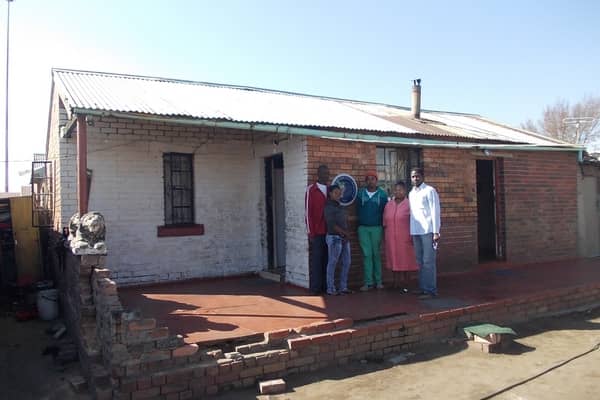Do you know some of the most historic houses in South Africa?The history of South Africa is not only documented in books and films, but it’s also deeply embedded in the walls and corridors of homes that used to house some of the country’s most iconic figures. Some of these homes have become as famous as their owners, for they know the secrets of the land and tell incredible stories of the past.
Here are some of the most historic houses in South Africa that have become a significant part of the country’s heritage.
Mandela House

Arguably the most famous address in South Africa, House 8115, Orlando, Soweto, is where former South African President, Nelson Mandela, lived for more than 14 years. The late struggle icon shared the home with his first wife, Evelyn Ntoko Mase, and then, following his divorce, his second wife, Winnie Madikizela-Mandela.
As his political activism grew, Mandela left the house in 1961 and was later arrested and imprisoned in 1962. Upon his release in 1990, he moved back to the modest four-roomed home before moving out after eleven days to a new home in the suburb of Houghton. Mandela later wrote in his autobiography, Long Walk to Freedom: “That night, I returned with Winnie to No. 8115 in Orlando West. It was only then that I knew in my heart I had left prison. For me, No. 8115 was the centre point of my world, the place marked with an X in my mental geography.”
Built in 1945, the house was converted into a museum in 1997, making it one of most-frequented heritage sites and among the historic houses in South Africa. The house vividly tells tales of struggle and resilience during the apartheid era. The walls of the house still bear bullet holes and scorch marks from petrol bombs, a stark reminder of the attacks black South Africans were exposed to during apartheid.
Inside the house are various memorabilia, artworks, awards, and honorary doctorates bestowed on Mandela. There are also old photographs of the former world leader’s family dating back decades.
The Satyagraha House

Commonly known as the Gandhi House, the Satyagraha House is a museum and guesthouse where Mahatma Gandhi lived for a short period during his 21-year stay in South Africa. Built in 1907 by Gandhi’s friend, the German architect, Hermann Kallenbach, the house served as the political leader’s home from 1908 to 1909.
The Johannesburg house now gives guests the opportunity to learn about the life of one of the most significant figures in history. It is at this house that Gandhi further developed his philosophy of Satyagraha, a method of passive resistance, or nonviolent protest. This is the same philosophy Gandhi employed to free his native India from more than a century of British rule.
The Satyagraha House consists of eight rooms, all of which are named after Gandhi’s family and friends. The guesthouse part of the home boasts a vegetarian restaurant inspired by the political leader’s vegetarian lifestyle. Of further note, for the owner, Gandhi, the man of peace, the Satyagraha House has a beautiful garden dedicated to meditation and yoga. It is definitely one of the most popular historic houses in South Africa.
Desmond Tutu House

Among other things, Vilakazi Street in Soweto, Johannesburg, is famous for being the only street in the world to have been home to two Nobel Prize winners. A few metres from the house of Nelson Mandela, the winner of the 1993 Nobel Prize, stands the home of Archbishop Desmond Tutu, who was honoured with the prestigious award in 1984. A man of peace, Tutu was an anti-apartheid activist and a devoted advocate of human rights.
While Tutu still owns the house and lives there when he’s in Johannesburg, the residency is one of the country’s significant historical homes. In 2011, Tutu unveiled a plaque at the house, marking it as a heritage site and among top historic houses in South Africa. Similar blue plaques are installed on several historical monuments around Joburg.
Tutu has been the owner of the home since 1975. The original house was extended in 1990.
Charlotte Maxeke House

As part of the city of Johannesburg’s plans to honour the late political activist, Charlotte Maxeke, her house in the Kliptown Township was turned into a heritage site in 2016. Maxeke, revered as the mother of Black Freedom in South Africa, was the founder of the Bantu Women’s League, which campaigned against “pass laws.” As an activist, Maxeke led the 1913 Women’s March against passbooks.
Apart from her house becoming a symbol of national pride, Maxeke is the eponym of the former Johannesburg General Hospital, which is now known as the Charlotte Maxeke Johannesburg Academic Hospital.
James Mpanza House

James Mpanza, affectionately known as the “Father of Soweto,” was a human rights activist who fervently advocated for decent housing for black South Africans. He founded the Sofasonke Party, the first civic movement in the country, to address the grievances of residents of Soweto. His party’s slogan was, “Housing and Shelter for All.”
In 1944, Mpanza led squatter movements that saw some 8,000 dispossessed people claim land and erect squatter camps in the Orlando Township, Soweto. Mpanza’s house, which has become a heritage site, served as the headquarters of the Sofasonke Movement, where public meetings were held.
One room of the house has been turned into a tiny, temporary museum.
Visiting the homes where iconic men and women once lived provides a truly fascinating peek into days gone by. We recommend adding these five homes to your must-see list as they are definitely worth visiting if you want to experience a piece of South Africa’s rich heritage.

